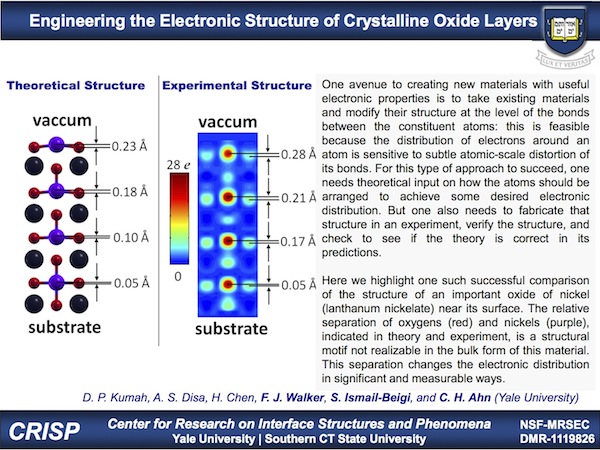One avenue to creating new materials with useful electronic properties is to take existing materials and modify their structure at the level of the bonds between the constituent atoms: this is feasible because the distribution of electrons around an atom is sensitive to subtle atomic-scale distortion of its bonds. For this type of approach to succeed, one needs theoretical input on how the atoms should be arranged to achieve some desired electronic distribution. But one also needs to fabricate that structure in an experiment, verify the structure, and check to see if the theory is correct in its predictions.
